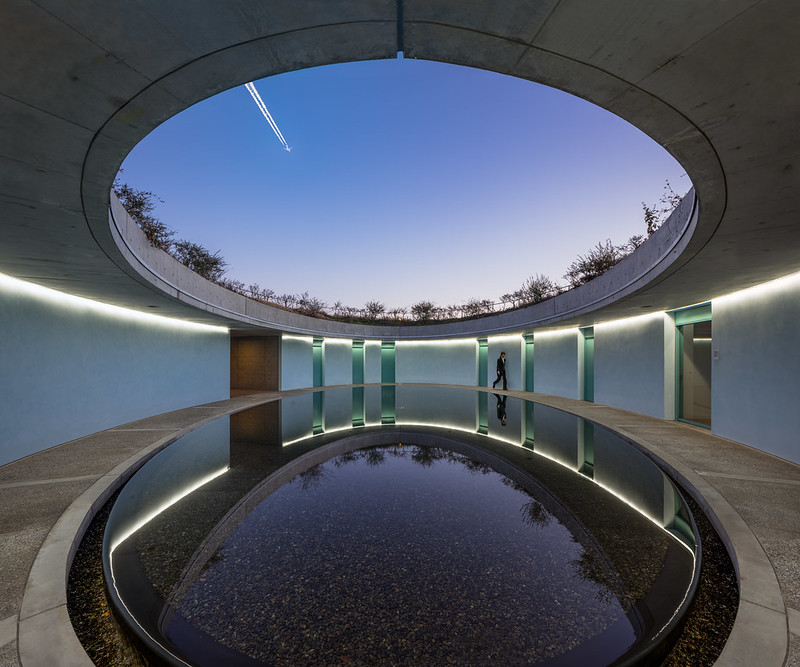 |
| The Oval, Bennesse House Hotel and Art Museum, Naoshima Island, Japan. Photo ©Darren Bradley |
I just returned from a couple of surreal weeks in Japan with the family. One of the highlights of the trip was a few days at the Bennesse House Art Museum and Hotel on Naoshima Island. It was one of the most fascinating, enjoyable, and frustrating experiences I've ever had.
 |
| Miyanoura Ferry Terminal on Naoshima Island by SANAA. Photo ©Darren Bradley |
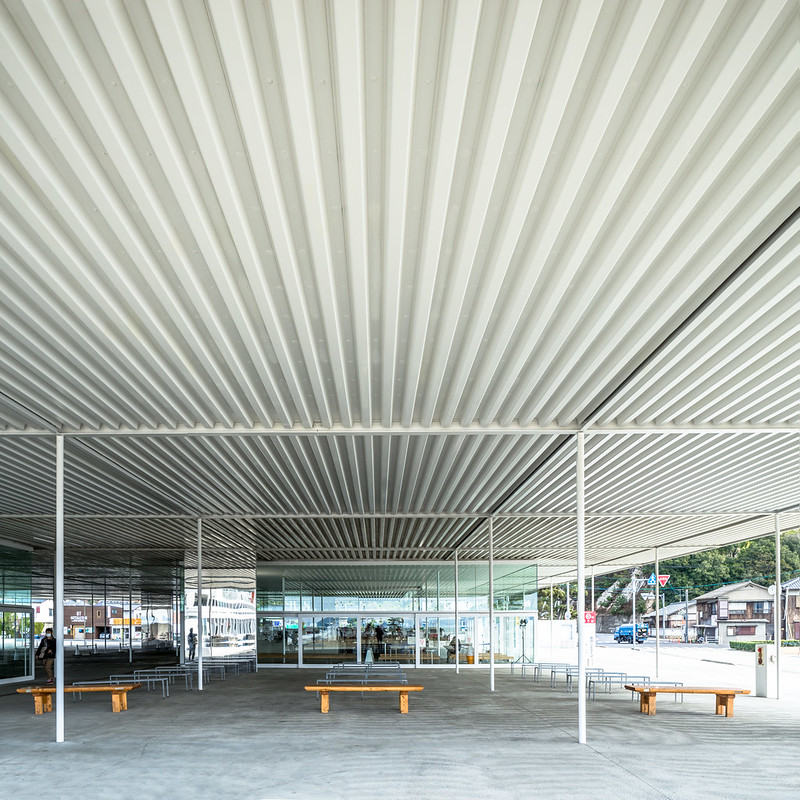
 |
| Photo ©Darren Bradley |
The Bennesse House Art Site is a hotel composed of several different buildings scattered around the location, perched on cliffs or in adjoining coves along the water.
 |
| There's a "No Cameras" sign next to this spot so I had to shoot this with my iPhone. Photo ©Darren Bradley |
 |
| Bennesse House Art Museum and Hotel, looking towards the Chichu Museum on the hill opposite. Photo ©Darren Bradley |
 |
| Bennesse House Art Museum with Bruce Nauman work casting a pink glow (not seen). The hotel front desk can be seen through the window. iPhone Photo ©Darren Bradley |
There are also two other museums that are part of the complex, and are a short walk or shuttle bus ride away.
The Chichu Museum is built underground (the word Chichu apparently means "underground") is in a hillside, and is dedicated specifically to the works of three artists - Monet, Turrell, and de Maria…
 |
| Furtive iPhone shot of one of the courtyards, Chichu Museum. Photo ©Darren Bradley |
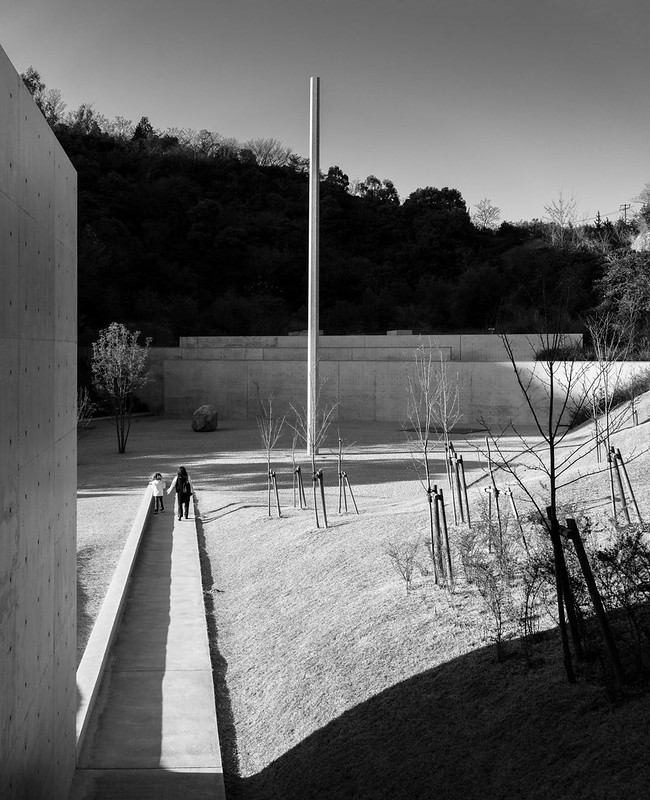 |
| Lee Ufan Museum entrance. No idea whether this shot is authorized or not. Photo ©Darren Bradley |
The entire complex was designed by architect Tadao Ando, which gives it a cohesive feel and perfectly complements the surrounding natural beauty of the site.
 |
| Bennesse House Hotel Park Wing. Photo ©Darren Bradley |
Beyond the art and architecture located at the Bennesse Art Site, there are other art installations around the island of Naoshima, and also associated museums on the nearby islands of Teshima and Inujima.
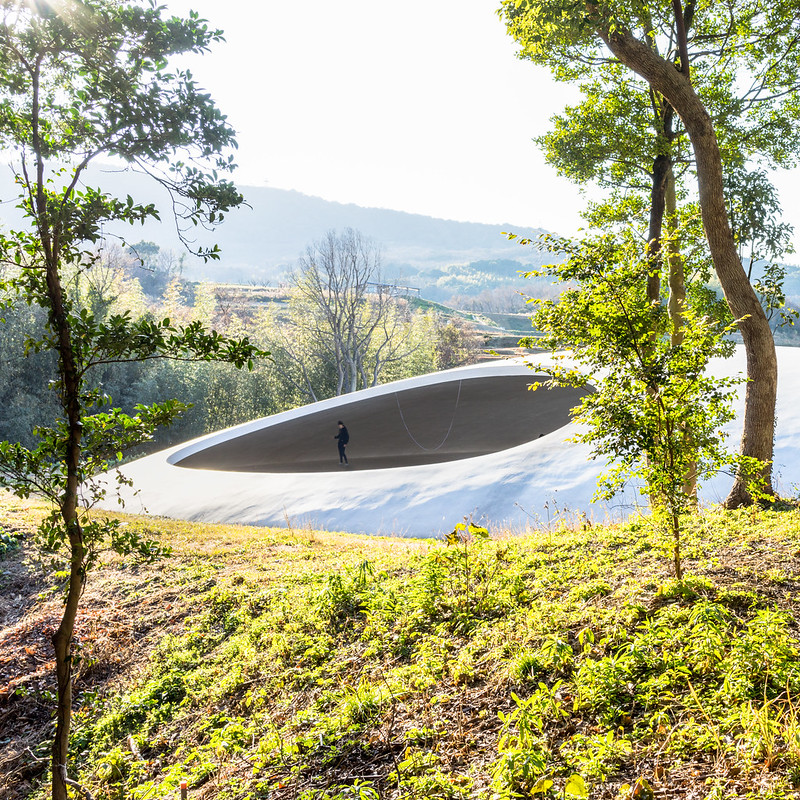 |
| Right after taking this photo, I was told that I wasn't allowed to stand here or take photos from here. Photo ©Darren Bradley |
It was extraordinary to be in a place so completely dedicated to modern art and architecture, and to have unprecedented access to it. Having the opportunity to sleep in a museum is something everyone should experience. I was free to wander around the exhibits in the middle of the night. It was awesome.
So why was it so frustrating?
Well, a couple of things, really. First and foremost, my main reason for going there as an architectural photographer was to experience the architecture and photograph it. Through photography, I can better see and understand the building - how it relates to its surroundings, how it plays in the light, etc. And I derive pleasure from creating those images. It's second nature for me, and also my idea of fun.
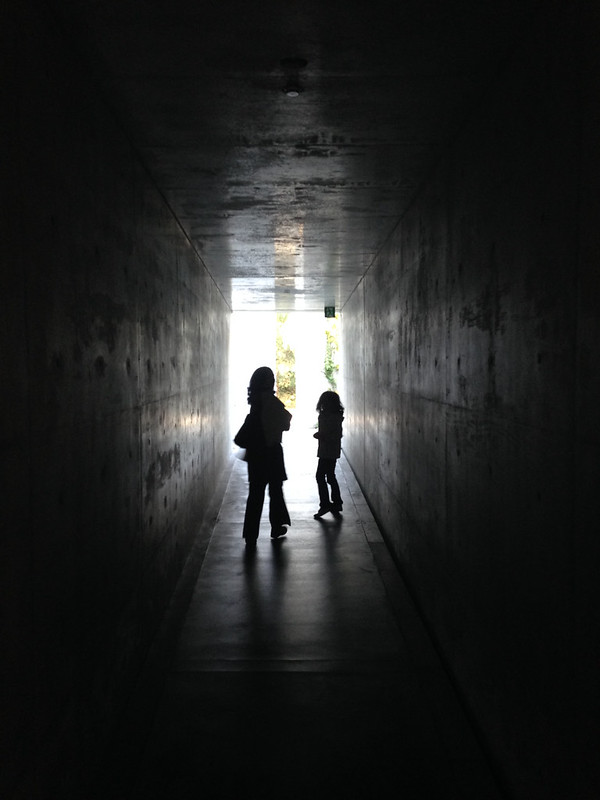 |
| Exiting the Chichu Museum through an underground tunnel. iPhone Photo ©Darren Bradley |
The problem is that the people at Bennesse House have taken a very conservative, out-dated view of photography and decided to largely ban it. It's outright forbidden in any form (including cell phone images) throughout the interiors of many of the buildings, and even some of the exteriors. And where it is authorized, it's frankly frowned upon and discouraged. (Most of the photos here are from either areas where it was allowed, or where I was told after the fact that it wasn't.)
 |
| Bennesse House Art Museum & Hotel. The restaurant is just to my right, and we had to pass through here to eat dinner in the evening. Photo ©Darren Bradley |
 |
| Photo ©Darren Bradley |
I was given several different reasons for this from the staff. None of them were consistent, or really made much sense. You can probably guess them but here they are (with my comments in parens):
- It "detracts" from the overall experience (whose experience?)
- They want to control the quality of the images created of the place (many of their own commissioned images aren't that great)
- If people see photographs of it, they won't feel the need to visit in person (when has that ever happened, ever?)
- The art is copyrighted (photos of the art are considered derivative works and are not included in that copyright, as such)
Of course, most museums and other buildings in the US and around the world DO allow photography (Getty, Smithsonian, deYoung, Guggenheim, Met, LACMA, Quai Branly, Orsay, Louvre, Tate Modern, are just a few that come to mind), as do most architectural sites. And there are certainly no shortages of photographs of the Monet waterlilies or James Turrell's installations on the web. As someone I know pointed out, there are lots of photos of the Mona Lisa floating around, but does that mean people don't flock to go see it in person? It's a ridiculous and outdated notion. And in this area of social media and connectivity, it can only serve to hurt them by preventing people from knowing about what a special place they have.
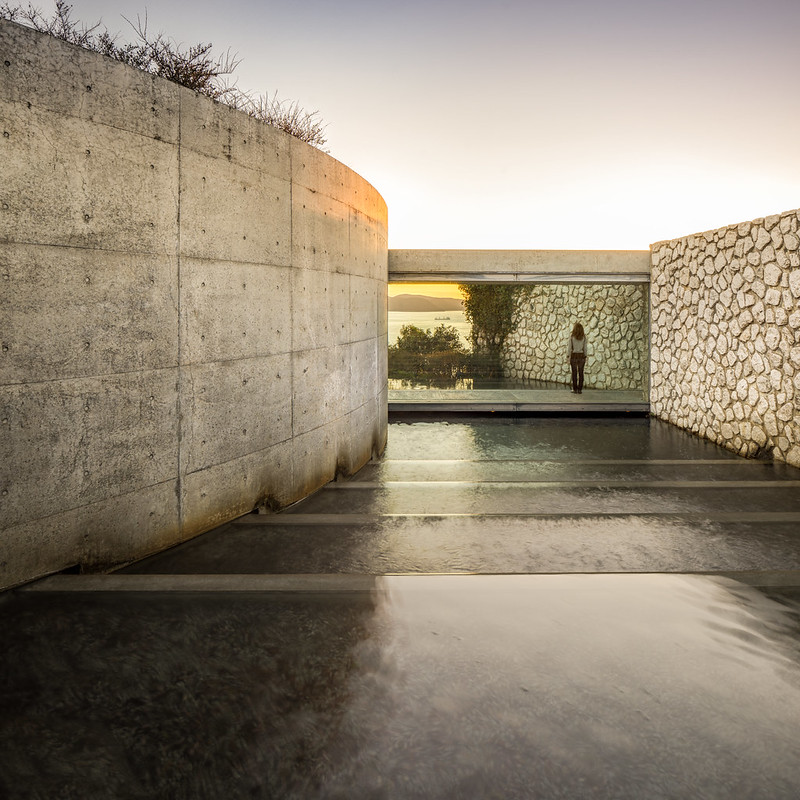 |
| The Oval at the Bennesse House is a small, six-room hotel wing at the top of a hill, connected to the main building by a funicular rail car. Photo ©Darren Bradley |
So I found myself in this beautiful treasure of modern architecture, and being told not only that I couldn't take photographs of most of it, but that I shouldn't even have my camera out.
 |
| Photo ©Darren Bradley |
And from nearly every vantage point from the outside of some of the buildings like the Chichu Art Museum and the Teshima Art Museum, I was forbidden from taking photos, as well. It was pure torture and it made me angry.
 |
| The Oval was one of the few places they didn't seem to mind me photographing. Photo ©Darren Bradley |
Of course, most people aren't photographers and they probably don't care about taking photos (although there are plenty of phone shots of all these places on the web, if you look). And if that's the case, you will thoroughly enjoy your stay and all of the things you can experience there (well, the food is a bit of an issue, too, because there's little choice and it's expensive and not that great. And there are times in the day where there's nothing available to eat).
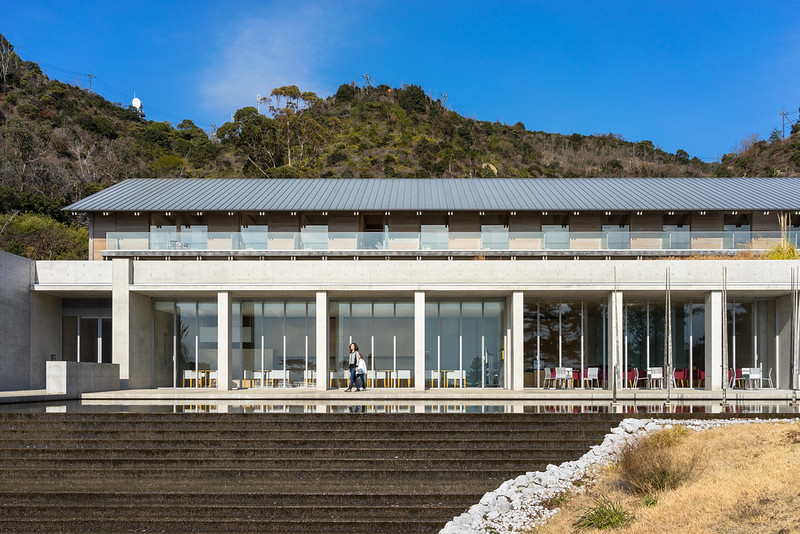 |
| Bennesse House Park Wing. Photo ©Darren Bradley |
 |
| Bennesse House Park Wing. Photo ©Darren Bradley |
Would I go back? Probably not, unless they change their policy about photography. Should you go if you've never been? Most definitely. But bring food!
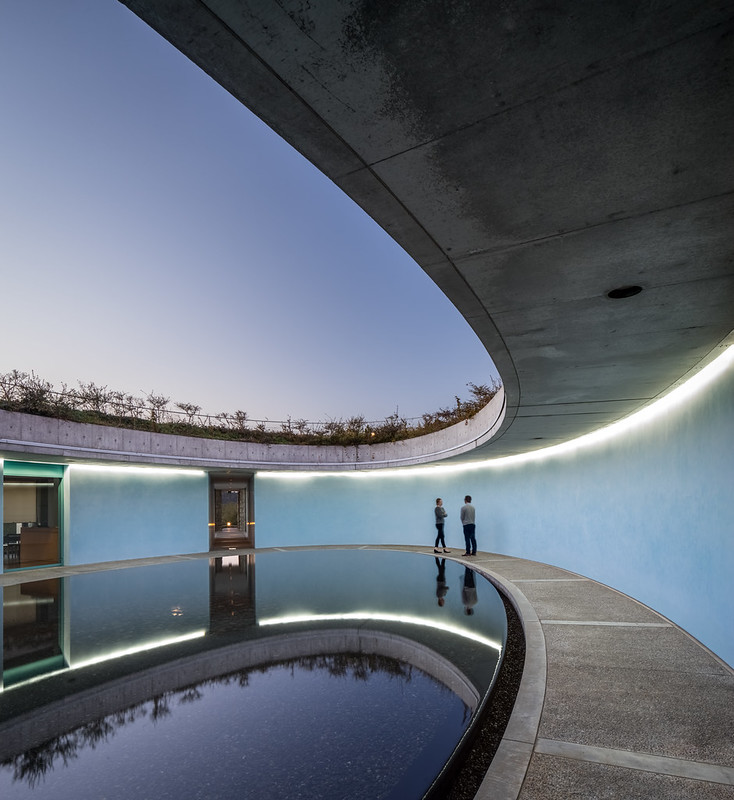 |
| Photo ©Darren Bradley |
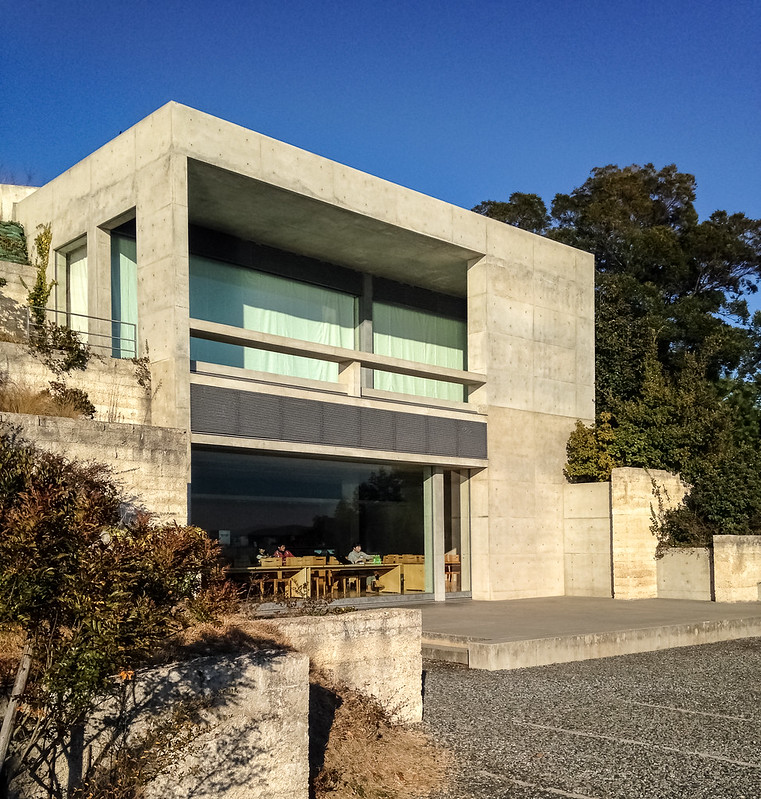

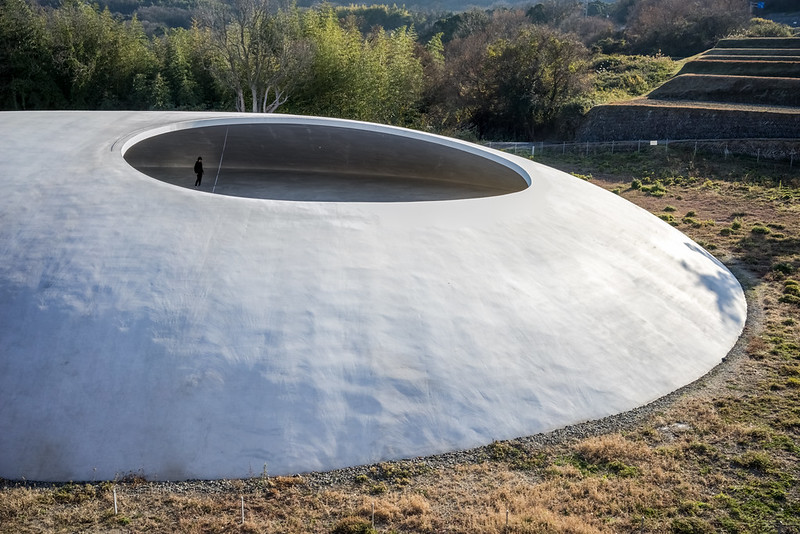

10 comments:
Very frustrating situation, indeed, I suppose they expect you to fast as well? Nothing worse than being both upset and hungry. :(
I know the feeling... I felt the same way at the Ghibli Museum. At least, they let me photograph the exterior.
The pictures you managed to take are gorgeous.
Thanks! I did what I could, considering the handicaps I had to work with. It was very frustrating.
As you know, we were at the Ghibli museum, too, and ran into the same sort of issues. But I was still able to get a few shots there of the interior halls. The exhibits were impossible, though.
Agreed - we had the same frustrations. The only thing I'll say is that it CAN be distracting and a downer to be trying to look at a piece of art and have other people shoving in with cameras and not really looking at anything. And I'm always trying to get students to LOOK at things rather than just taking pictures of them! But I don't think global bans are necessary or helpful. At any rate they should be advertised, especially for such expensive museums with such famous architecture that are so hard to get to. If you read the FAQ closely you can gradually piece together that you basically can't take photographs of anything you'd want to take photographs of, but this requires a close reading of the "can I take pictures of the artworks" entry. Maybe they should have commissioned a less photogenic set of buildings. At one point, though, I swear the signage was barring me from taking a picture of the Inland Sea. Pretty sure they didn't build that.
I also don't mind the (rare) approach of requiring you to fill out a form or pay for a more expensive ticket or something to allow picture-taking. Fallingwater does this, for example, though the nearly $50 markup (it's two different tour categories) seems steep. This may be a little elitist ("good"/"serious" photographers will pony up, others won't bother) but presumably it reduces whatever the putative "disruptive" effects are. It also acknowledges that photographing the building doesn't hurt it, and is something that people might want to do.
Ultimately, it's their building, and their choice, and if they think that photography undoes the peaceful state that the building is supposed to put you in, then, okay, fine. It would be interesting to review the rest of their policies and curation decisions and see if this principle of producing a contemplative atmosphere is followed with any consistency...
Thanks, Addison. I appreciate that point of view, but I question just how much my taking photos really disturbs the viewing experience of someone else. In any case, I would certainly have welcomed the opportunity to pay a supplement for the right to take photos without restriction. I even volunteered to come during off hours, but to no avail. And yes, I saw that same sign that said no photos from the patio of the Chichu Museum, effectively barring me from taking photos of the Inland Sea! I ignored that one, too. But it's completely absurd.
I visited Naoshima a few years ago and found the local food amazing! I can't believe that you are suggesting people to bring their own food. Just go into the village and find a small local restaurant. Point at things on the menu and voila the most amazing food ever!
I was actually referring to the Bennesse House Resort and not the entire island when I mentioned that you should bring your own food. Yes, I know there are a few good food options elsewhere on the island. But while we're on the subject, Japan can be a very challenging place to travel with small children because restaurant options are much more limited. Many restaurants, we found, didn't allow children in the evenings, and "family-friendly" restaurants frequently closed by 5 or 6pm. For adults without children, there are many more options. Regardless, for Bennesse House, it's no small affaire to leave the hotel to go into the village. You are generally dependent on the shuttle bus service. Bringing food from the village into the hotel is probably a good idea.
I've found that, generally, people tend to freak out when you pull out a tripod. Taking a photo with a cell phone is ok but the minute you take out a large camera and tripod, all hell breaks loose! I'm shooting around New Delhi India and and get stopped every time I go out to shoot by some security guard or the other.
But then shooting architecture without a tripod is very challenging.
In Japan, public courtesy is the upmost importance (hence the ban on speaking on cell phones on public transport etc etc.). What you notice as a result is that people are IN their environment rather than trying to CAPTURE their environment at places like Naoshima. As an art lover (which is who the place is created for, not necessarily so people could go and take photographs) I petsonally DO really appreciate the ban on photography at times so that you can enjoy the place in a more peaceful, immersive fashion. When in a different country, and while at a place like Benesse (which whether you like it or not is NOT a public space) you should accept and respect the local cultures. At the very least you should check if photography is ok before you go somewhere... it is not some god given right for you to photograph whatever you like, esp in privately owned galleries. Your attitude is a little ignorant.
Also, I thought the food at Benesse House was sensational! (If a little overpriced). Maybe the chef was having an off day when you were there.
Yes, Benesse House is certainly free to set whatever policy they like for photography. It doesn't mean I have to like it.
As someone who has lived, worked, and been educated in many different countries (including North America Europe, and Asia), I can assure you that I have the utmost respect and understanding for local cultures. I also have close immediate family who are Japanese, so share some understanding of this particular local culture, as well.
My frustration with Benesse House photo policy has nothing to do with ignorance of local culture. There are plenty of other museums in Japan that allow photography. And there are plenty of Japanese taking photographs inside the Louvre, the Met, and other western museums (even when it's ostensibly not permitted, there, either).
As for the food, I didn't mind it and they were extremely nice and accommodating. But it was too expensive for what it was, and it was difficult to go elsewhere (although there are some great casual restaurants and noodle houses elsewhere on the island). At Benesse House, we all preferred the Japanese-style restaurant at the Museum. Since my wife is from Paris, she was less impressed by the "French-style" restaurant at the Park.
Overall, as I said, it was a fantastic experience. But also extremely frustrating for me to not be able to photograph so much of what I saw. Especially since I was generally the only one around and therefore was not infringing on anyone else's experience.
Post a Comment